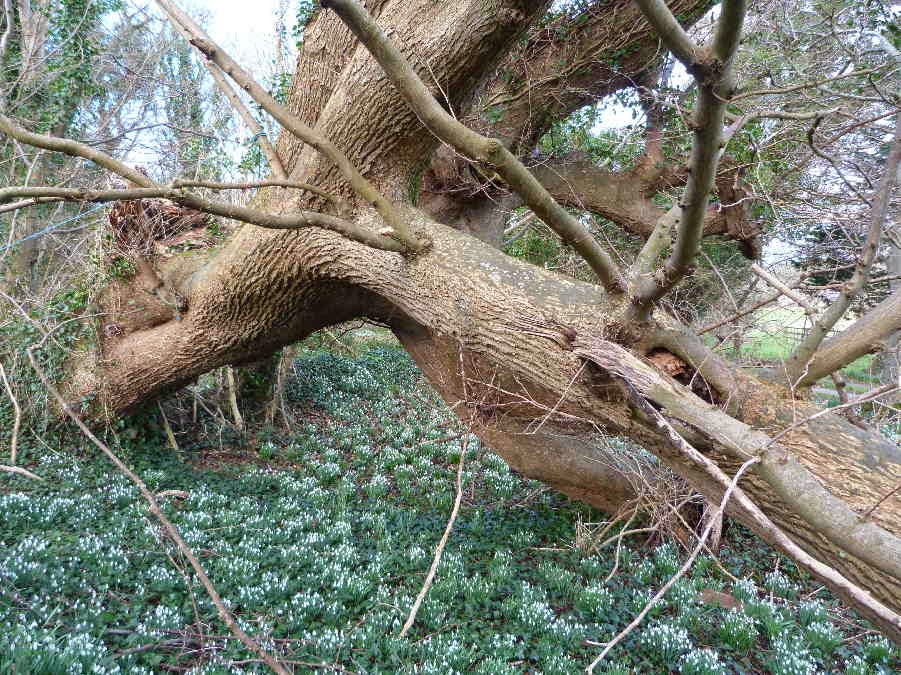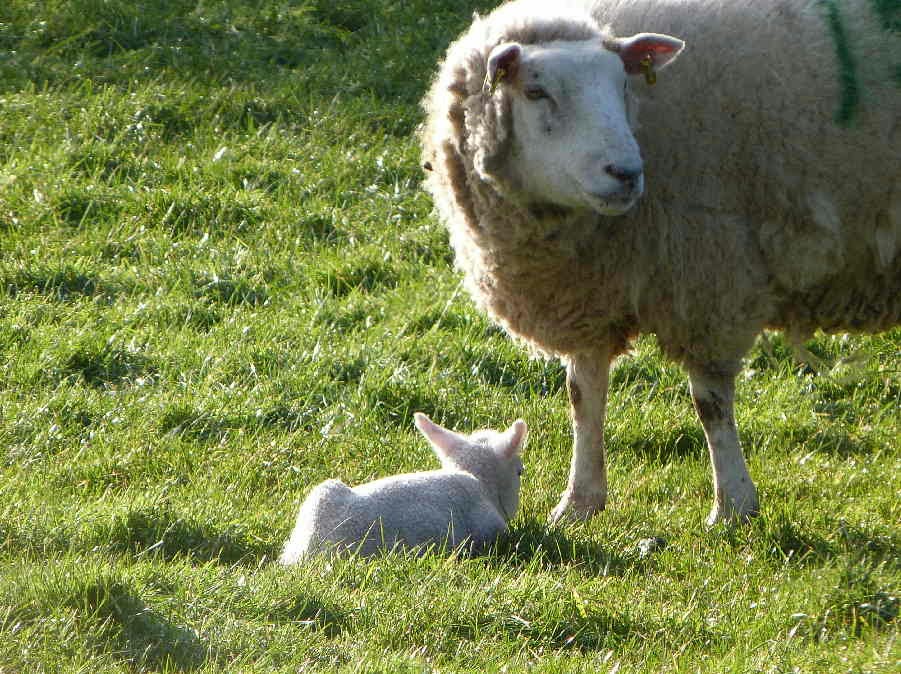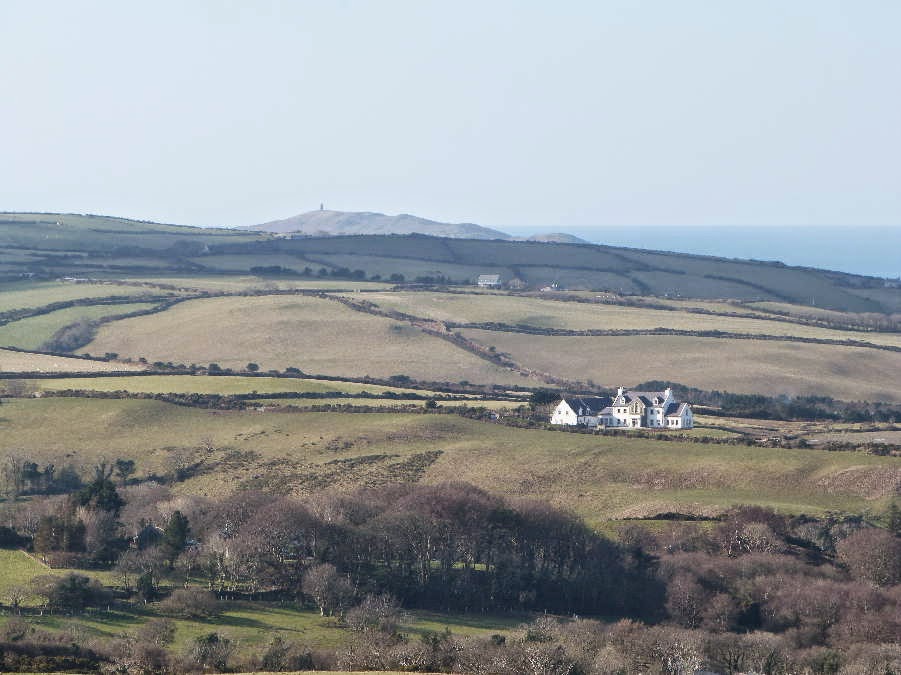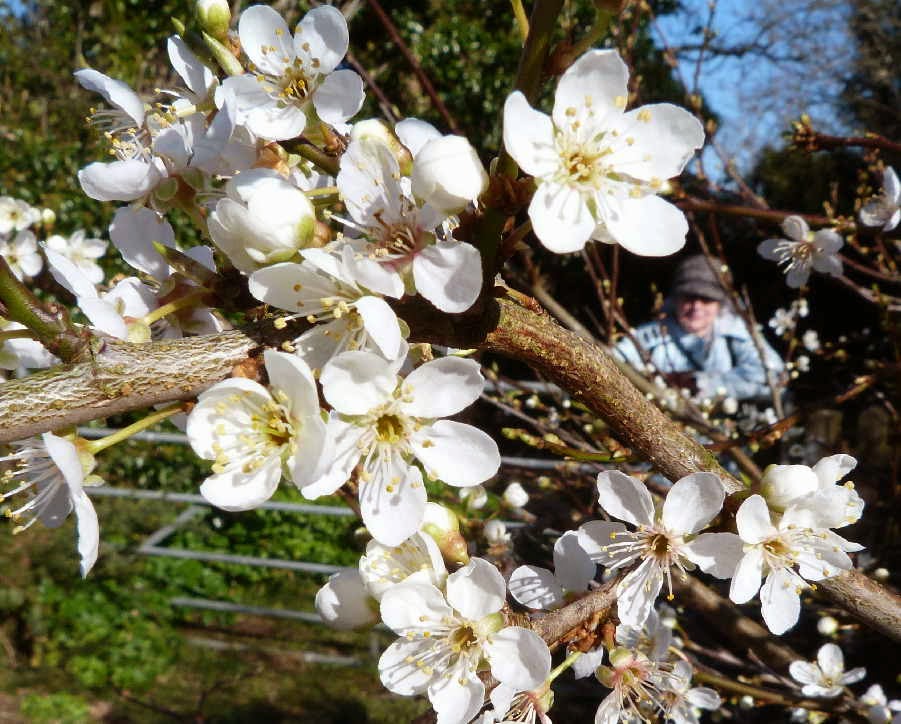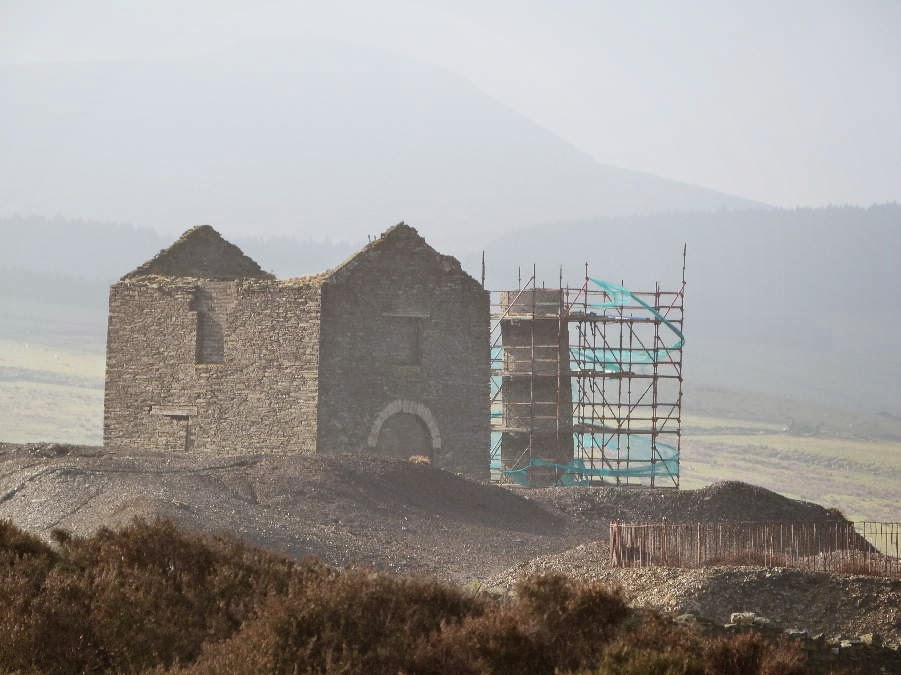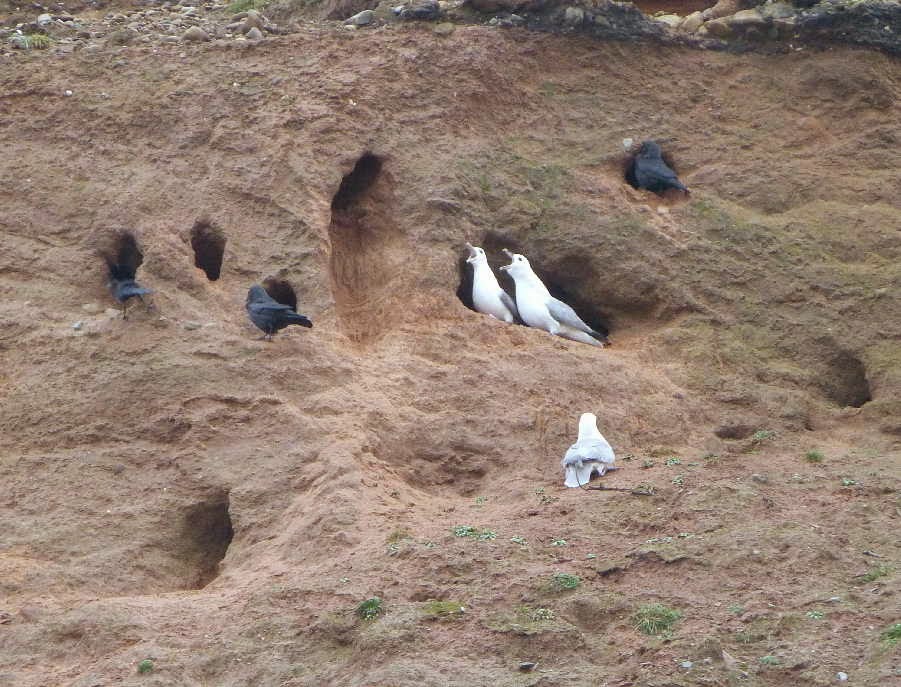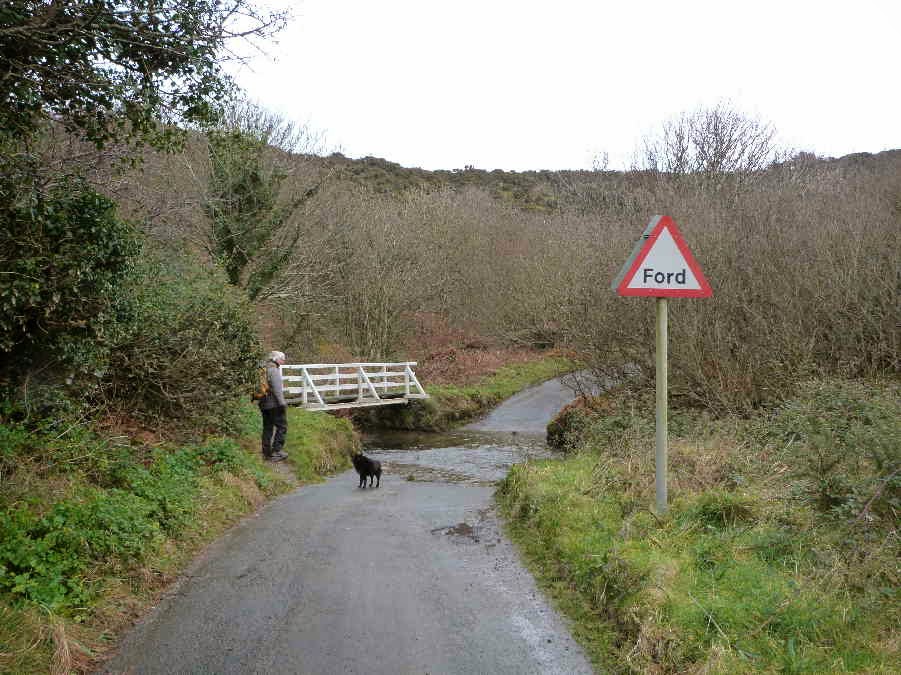"nearly
spring-like"
Monday 25th February,
2013.
It is hard to find "new" walks after all
these years on the Island, so we usually choose old favourites . . . and that is
what we did this week. On Saturday, I was racking my brains to come up with a
good walk for cold weather. (I spelled racking with a w and then got nervous
and checked. It appears that both spellings are used but "racking" without the
w is accepted as being the more correct version. One is never too old to learn
how to spell!) It was still cold but the forecasters were predicting a calm day
with sunny spells for Monday (max. 5 degrees C and min. zero), so it was
possible to venture up into the hills again. But, after a frosty night, it
seemed best to start off at a lower level to avoid possible ice on the higher
roads and to "warm up" before climbing to a higher altitude. Then I thought . .
. why not do the first of our "flower walks" and go to see the snowdrops at
Broughjairg Beg, a farm near the footpath from Ballaugh towards Kirk Michael, en
route to Slieau Curn?
We met at Dorothy's house and had the usual
discussion about whether to climb Slieau Curn from the north or the west.
Trevor suggested that there might still be some frost on the snowdrops if
we visited them first so we headed west. I was carrying Alexander because he
had gone on strike, having decided that he would prefer to stay in the car. Tim
said that Alex probably thought it was too cold for a walk but I had a
different theory. I think he only agrees to walk with us because he enjoys the
picnic tea break. It is the highlight of the walk as far as he is concerned.
Recently it has been so cold and wet that we haven't stopped for a break and I
have been giving the dogs their snack when we get back to the car. So Alexander
has worked out that he doesn't need to walk for four hours to earn his treat.
He could just as well wait in the car and have it when we got back.
There wasn't any photogenic frost on the
snowdrops because of the overhanging trees. It is interesting to see how much
trees warm up the ground around them even when the branches are bare in
winter. But the flowers were looking good. There is a huge patch near the
gate to the farm but I preferred the more informal setting of these snowdrops
growing under the trunk of a huge fallen tree, which may be an ash or oak,
judging by the bark.
We continued along the footpath until I heard
and then spied my first lamb of the year. Not a great photo because I was
looking directly into the early morning sun - but I wanted a record of the
event. Spring is getting off to a slow start this year so we treasure all signs
of warmer days to come. I soon saw some bigger lambs in the next field so this
wasn't really the first one - but it was my first lamb.
A little further on Tim saw something over
the hedge but I wasn't tall enough to see it until we came to a gap in the
vegetation. It was a standing stone in the middle of a field. Dorothy said it
must be significant because it was mentioned on the map. I checked when we got
home and she was right. One of my maps just said "stone" in very small print
and the Ordnance Survey Map said it was a "standing stone". I tried Google but
without success - so I have no idea how long it has been standing . . . or
why. The natural markings on the stone and the "foot" at the base make it look
rather like a weird animal sitting with its nose in the air.
At the side of the footpath along the old
railway line there had been quite a lot of recent activity. There was a new
drainage ditch along the edge of one field and further on a large pond, covered
in a thin layer of ice, with a small woodland area planted at the margin. The
plastic tubes are supposed to protect the little trees from rabbit
damage.
At Kirk Michael we turned up the Baltic
Road. A fairly steep climb that seems to go on forever. We stopped to
photograph some Loaghtan sheep in a typical Manx winter landscape. Shades of
muted brown and beige contrasted with the bright blue of the sea. And a distant
ferry rounding the north of the Island - probably travelling between Belfast to
Liverpool.
And a little further on I stopped again to
turn my camera to the south . . . towards a new country house, Cooil Dharry,
with Peel Hill in the distance. If anyone has a spare £6,000,000 - this may be
a tempting property http://premierproperty.im/property-for-sale/cooil-dharry We have been watching the house going up for some time because it is
on one of our regular walking routes and now it is complete and on the market.
There were rumours that it would cost even more - one website speculated that it
would be in the region of fourteen million - so it may be a bargain at
six!
After a sunny tea break on the south side of
Slieau Curn (which Alexander enjoyed), we had one short climb and then we were
thankful to be walking downhill again, towards Ballaugh. Tim took this photo of
the greenway road winding down the hill.
As we turned onto the old railway line we
came across some early blossom. One small tree had blown over so I was able to
take a close-up photo of the blossom (rather larger than life-size). I didn't
notice Dorothy lurking in the background until I saw the photo on the computer
screen. I thought the tree might be a cherry-plum and my suspicious were
confirmed by the internet. The blossom is too early for the wild cherries and
the lack of thorns ruled out blackthorn.
The sheltered fields were warming up a bit in
the sun and I couldn't resist this family group - an exhausted mother having a
nap with her triplets - or perhaps her twins and their friend.
It was another four hour walk but
probably not as far as last week because Danny is a faster walker than
Alexander, who did agree to walk after being carried for a few minutes. And it
wasn't as cold as last week because there was far less wind-chill, As Dorothy
summed up " Except for the cold it was nearly spring-like
for the hike."
